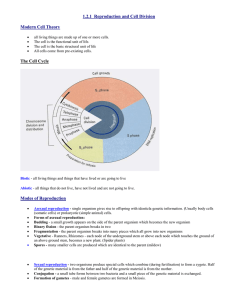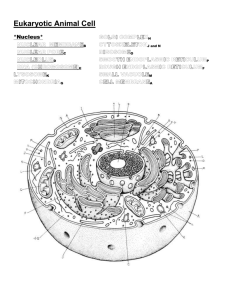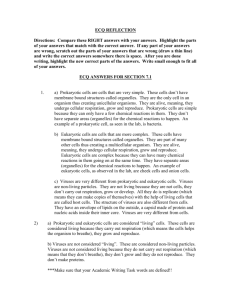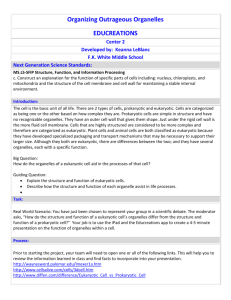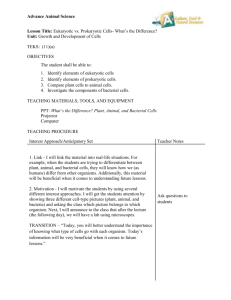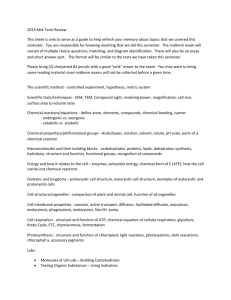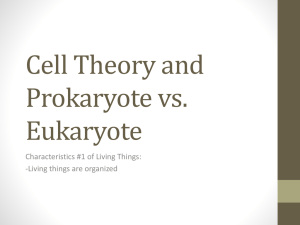Honors Biology Final Exam Essays 2013– 2014 1. During an
advertisement
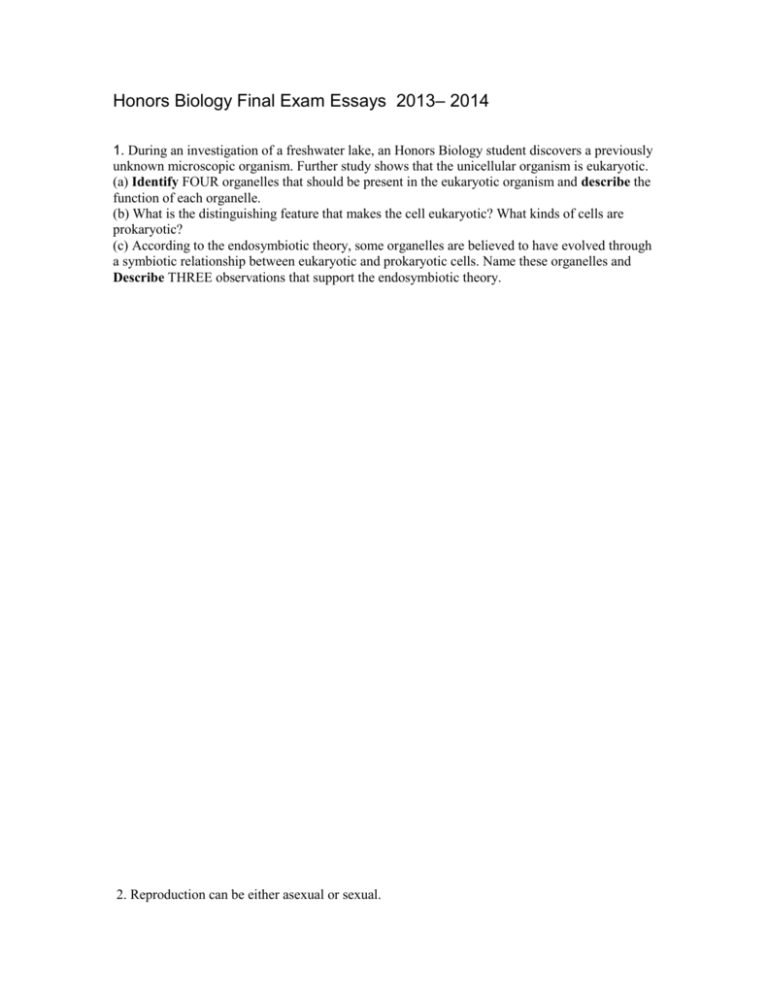
Honors Biology Final Exam Essays 2013– 2014 1. During an investigation of a freshwater lake, an Honors Biology student discovers a previously unknown microscopic organism. Further study shows that the unicellular organism is eukaryotic. (a) Identify FOUR organelles that should be present in the eukaryotic organism and describe the function of each organelle. (b) What is the distinguishing feature that makes the cell eukaryotic? What kinds of cells are prokaryotic? (c) According to the endosymbiotic theory, some organelles are believed to have evolved through a symbiotic relationship between eukaryotic and prokaryotic cells. Name these organelles and Describe THREE observations that support the endosymbiotic theory. 2. Reproduction can be either asexual or sexual. (a) Using a specific example, describe how organisms can reproduce asexually. Discuss TWO evolutionary advantages of asexual reproduction. (b) Identify THREE ways that sexual reproduction increases genetic variability. For each, explain how it increases genetic diversity among the offspring. (c) Discuss TWO pre-zygotic isolating mechanisms that prevent hybridization between two species. Include in your discussion an example of each mechanism. 3. Certain human genetic conditions, such as sickle cell anemia, result from single base-pair mutations in DNA. (a) Explain how a single base-pair mutant in DNA can alter the structure and, in some cases, the function of a protein. (b) Explain, using a specific example, the potential consequences of the production of a mutant protein to the structure and function of the cells of an organism. (c) Describe how the frequency of an allele coding for a mutant protein may increase in a population over time. 4. It has been said that variation is the raw material that drives natural selection. (a) Describe THREE ways variation comes about. Some of these variations can be considered adaptive. (b) Define adaptation, describe THREE categories of adaptations. (c) Using a specific plant or a specific insect or a specific mammal, give TWO examples of each type of adaptation.

